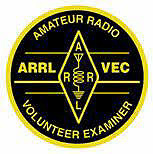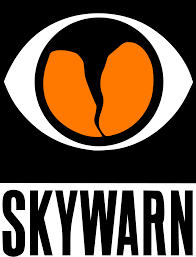In the last presentation we discussed the National Traffic System (NTS) and Radiograms as the form used in passing messages. These messages are called “traffic”, and when undertaken for a real or simulated served agency it should be “formal”. Why? Because formal traffic requires thinking before transmitting and BECAUSE FORMAL TRAFFIC DIMINISHES ERRORS. Therefore, let’s review the elements of formal traffic.
We do not need a message blank radiogram to pass formal traffic, but it is easier if you have one. If you have no blank radiogram, just write the information down as read to you and you should be able to easily transcribe to a radiogram later. Let’s look at the parts, what they mean and the reason they are important.
There is Heading, the Address, a Body, and a Signature.
The Heading
Lets look at the Heading. Regardless of how many stations are involved in routing the message from New York to San Francisco, the heading is never altered. It consists of 6 or 8 parts.
1. Number. This is the sequential number assigned by the sender and could be for the duration of the event. In routine nets the sending station may restart his
number sequence each month or year. It identifies the message kept on file for future reference. Sometimes things get lost. (Do keep a record of traffic sent for
future reference!)
2. Precedence. There are 3 possibilities. “R” means “Routine”. “W” means “Welfare” and concerns messages indicating welfare of individuals. It should be
handled before “Routine”. “P” indicates a “Priority” message and should take precedence over all but “Emergency”. There is no “E”, but “Emergency” is
spelled out.
3. HX or Handling. For the purposes of the drill, this may usually be omitted, as it concerns whether one will use toll calls or must answer the sender.
4. Station of Origin. Simply the Call of the station originating the message, and may not (occasionally) be the station first sending it.
5. “ARL” or “Check” is a position indicating the number of words in the body (not including the heading, address nor the signature). This is important to ensure accuracy. If operators disagree on the word count they can consult together and resolve it. Some examples: Telephone numbers usually count as 3 words (229 888 1090). “73”, Sincerely or similar do count in the words of the body.
6. Place of Origin: Usually the city and state. In a formal emergency or drill may indicate the station’s location with the operation.
7. Time Filed (not necessarily time sent). (Sometimes omitted, but not during a formal drill or an emergency!)
8. Date Filed.
The Address
The “Address” usually includes the name (and Call Sign if appropriate), street address of the recipient, and telephone number.
The Body
The “Body” is the message itself and should be no more than 25 words (some digital formats excepted). Punctuations are avoided, but when a period is needed instead use “XRAY”, for question use “QUERY”. Any salutation, or sign at the ending is included in the Body and the word count.
The Signature
Signature. This is the person (not necessarily a ham or the “Originator”) who sends the message.
How to "Pass Traffic"
That covers the “How?”, now about the “When?” and “Where?”:
Anyone may accept traffic with the responsibility of delivering it or taking it to someone who will send it along to whoever will deliver it. If you have traffic for GEMA and come across someone at GEMA or who will take traffic for GEMA, then call that station and list your traffic. The most certain way to send traffic along is to go to a traffic net. In Georgia on SSB we have the “Georgia Single Sideband Net” at 3.975 mHz at 23:00 UTC (7PM summer, and 6PM winter). Also the Georgia “Traffic and Emergency Net” at 3.9825 at 7:15PM daily. Also the Georgia Traffic Net 3.9875 at 1PM weekdays. On CW, the net in Georgia is Georgia State Net at 3.549 at 7PM and 10PM daily. If you happen on some other traffic net out of state they would likely gladly accept your traffic.
Sample Traffic Passing
Here's a sample script of a message being passed:
Net Control: (Will first read a preamble, then ask for certain responses. One will be “Any traffic for 4RN?” (This refers to the Fourth Region Net for traffic destined out of state. This is not what we want.) ...
Eventually ...
Net Control: “Is there any formal traffic?”
WX4BK: “WX4BK”
Net Control: “WX4BK, list your traffic.”
WX4BK: “I have one for Villa Rica, WD8LQT.”
Net Control: “WD8LQT, can you accept traffic?”
WD8LQT: “WD8LQT can take Traffic.”
Net Control: “WX4BK call WD8LQT and pass your traffic.”
WX4BK: “WD8LQT, are you ready to copy?”
WD8LQT: “WX4BK Ready to copy.”
WX4BK: “Please copy my number 46, Routine, WX4BK, Check 11, Villa Rica, GA, July 28, 1845L ... Going to: John Playford, 1234 fake address, Villa Rica Georgia, 31080. Telephone 111-222-333. [He reads it slowly as though he were writing it at the same time.] .. Break for Text.”
WD8LQT: “Ready for Text”
WX4BK: “Great Field Day XRAY Please send point totals next week XRAY ... break for signature.”
WD8LQT: “Go!”
WX4BK: “Brian WX4BK ... End, no more.”
WD8LQT: “Roger your number 46.”
WX4BK: “Traffic passed, back to net. WX4BK”
Net Control: [Resumes Net]
Remember ...
The "Check" is the words in the message body, but does NOT include a signature.
XRAY is used for period. Periods are counted as words.
Although I put an XRAY at the end of text, the last period is assumed and not required. Punctuation should be kept to a minimum.
Spell any unusual words or words which may cause confusion, like “to”, “too”, “two”, use standard phonetics, and say “I spell: tango whiskey oscar”.
CW is another story, but follows a similar format which transcribes directly into the above message format. All digital methods are valid, but the only one I know of
currently in use for traffic in Georgia is Winlink, commonly using Pactor with Airmail.
This may be sent to any valid addressee who accepts the traffic.




